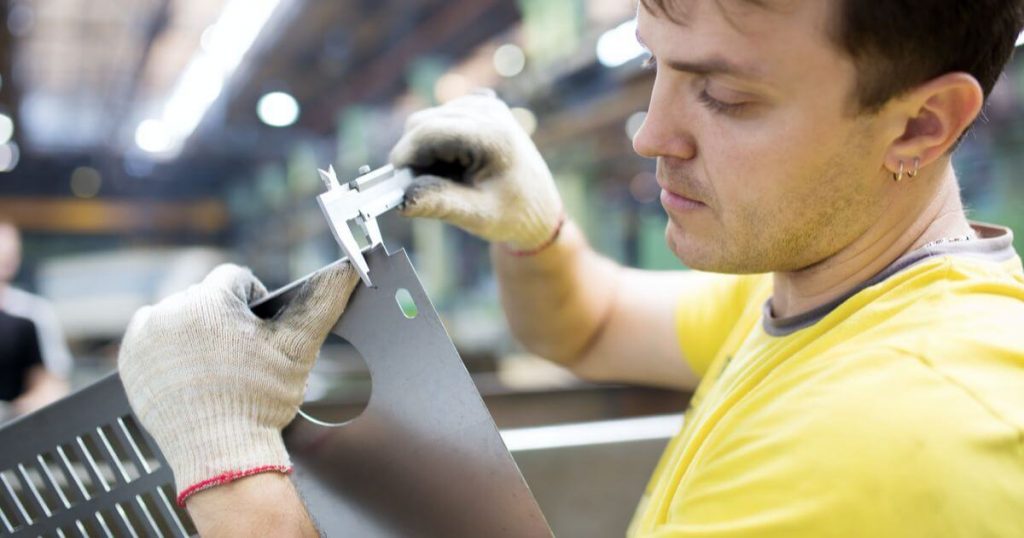I have written extensively about pre-shipment inspections (before, during, or after production), always from the perspective of the buyer checking what a supplier is doing; but I noticed that I haven’t covered the receiving inspection (also called incoming quality inspections). However, that’s a really important topic, so let’s get into how to set one up here…
Virtually every great manufacturer is very good at doing receiving inspections (and confirming that it can use the inputs from its suppliers for its internal processing). So how can you go about setting yours up?
To quickly jump into this topic you can watch this presentation on how to set up a receiving inspection:
You can also get access to the slides themselves here if you’d like to read them later.
5 key considerations to assure a solid receiving inspection setup
The important considerations are as follows:
- A set of requirements (checklists, approved samples for comparison, examples of common defects…)
- A way to focus on the most important criteria
- A procedure to follow, step by step
- A way to report findings and help with traceability
- A way to drive improvement in the supplier base, when needed
As I write this, I am thinking, ‘this is quite similar to final (pre-shipment) inspections‘. Actually, the closer the pre-shipment inspection is to the subsequent receiving/incoming inspection, the better. As a buyer, you really want them to be aligned, so that issues are caught before shipment!
Some basic concepts, if you intend to do random inspections
You probably don’t have the resources to check 100% of the requirements on 100% of the pieces shipped by 100% of your suppliers.
To pick a random sample, you will probably follow the ASQ/ANSI Z1.4 (or ISO 2859-1) standard, based on the idea of AQL. And you should be familiar with the idea of the inspection level.
1. How to define receiving inspection requirements?
You need a checklist that is based on the product specifications and other elements. I wrote about this before, and provided a free template in that article.
It is good if you have an approved sample of each item you inspect, too. Certain aspects of the requirements can’t be communicated in written specifications: exact color, touch & feel, etc.
I wrote about checkpoints and potential defects before, too…
2. How to identify the most critical parts and the highest risk?
This is extremely important since you don’t want an inspector to spend a lot of time checking low-risk batches and unimportant criteria.
Based on the risk you see, there are different ways to spend less time on the lower-risk batches, as I explained before:
- Based on the product risk: reduce the inspection level
- Based on the supplier risk: reduce the inspection severity
When it comes to the product risk, you probably need to look at the overall risk to your business. Talk to customer-facing staff, talk to your quality manager, talk to some production people, and you should have an idea.
Sometimes, it is actually a regulatory requirement. For example, inspection is required on brake systems in an American automotive factory, but more trivial elements are usually not checked.
Ideally, the designers have identified what is ‘critical to quality’ for each product. An example of a good risk assessment tool is shown here.
When it comes to supplier risk, it is often more difficult to assess.
Typical KPIs to follow, when it comes to supplier quality performance, would be:
- % passed inspections
- % defectives
- Number of corrective action plans requested in the past
- % of corrective action plans that were not closed fully
Based on the suppliers’ past performance, overall attitude, and so forth, you will decide that some can’t be trusted (which means you should check all their deliveries), while others can be given more rope (the most efficient approach is often letting your best suppliers do self-inspection and be accountable for it).
3. What procedure to follow in your incoming inspection?
When it comes to the procedure for picking samples at random, the basic steps will probably be:
- Get the delivery plan/notes, indicate what needs to be checked
- Get the “not checked yet” parts in one area
- Count quantity (if needed)
- Pick samples randomly
- Conduct the inspection (e.g. visual check, dimensional check, special testing…)
- Set aside defectives, classify them and count them
- If the batch is accepted, have it moved into the “checked and OK” area. If it is accepted but there is a special note for production (e.g. ‘must do 100% check on point XYZ’), make sure it will be seen and followed. If it is refused, trigger the appropriate response (e.g. send back to the supplier, invite the supplier to come and do a sorting, etc.).
I’d suggest you read these 3 articles, as a primer:
You might also look for dedicated QC software. And this AQL calculator might be useful.
4. How to report the findings?
If you end up inspecting the same product type over and over, you might want to prepare a report template that includes the checklist. I wrote about this in this article.
And this can be automated with dedicated software, too.
Your reporting will become part of traceability records, so don’t forget to produce some type of record…
5. How to drive improvement in the supplier base?
This could be the topic of a 500-page book. But, where to start?
You are collecting data. Make sure you pass these data in a way your colleagues in procurement can use. They should have some form of a dashboard for each supplier — at least for each key supplier.
By showing those suppliers that your company tracks important data (e.g. % defectives, % late deliveries, cost reductions…), you will be more likely to get better performance out of them.
And, when you see a very serious issue, and if the supplier is not disproportionately large, you can probably raise a Corrective Action Request, which might be in the form of an 8D.
******
I hope this is helpful. Please leave a comment below if you have specific questions about this or any inspections. I’ll be happy to respond.
Quality Assurance Policy For Importers In China [Webinar]
What is the 80/20 rule when it comes to QC in China? The answer is building a strong quality assurance policy of your own.
In this webinar, we’re going to explore key challenges facing importers from China, and the elements that compose a really solid, effective quality assurance policy.
Improving your quality assurance will help avoid poor quality products from hurting your business. Hit the button below to register to watch the webinar!




